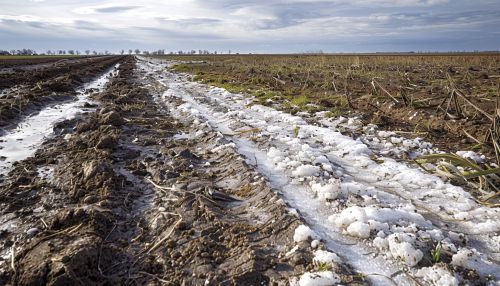Soil Salinization
Introduction
Soil salinization is a global phenomenon that affects agricultural productivity and environmental health. It is a process that results in the accumulation of salts in soil, often to levels that are detrimental to plant growth and soil structure. Salinization can occur naturally or as a result of human activities, and it is a major concern in arid and semi-arid regions where irrigation is commonly used. This article provides an in-depth exploration of soil salinization, its causes, effects, and management strategies.
Causes of Soil Salinization
There are two main types of soil salinization: primary and secondary. Primary salinization is a natural process that occurs over thousands of years due to weathering of rocks and minerals. Secondary salinization, on the other hand, is caused by human activities such as irrigation, deforestation, and improper land management.
Primary Salinization
Primary salinization is a slow process that occurs over geological time scales. It is caused by the weathering of rocks and minerals, which releases salts into the soil. These salts are then transported by water movement, either through rainfall or groundwater flow, and accumulate in areas where evaporation exceeds precipitation. This process is particularly common in arid and semi-arid regions, where high evaporation rates lead to the concentration of salts in the soil profile.
Secondary Salinization
Secondary salinization is a much faster process and is primarily caused by human activities. The most common cause is the use of irrigation in arid and semi-arid regions. When irrigation water is applied to the soil, it can cause the water table to rise, bringing dissolved salts to the surface where they accumulate due to evaporation. Other human activities that can lead to secondary salinization include deforestation, which can alter the water balance and lead to increased salt accumulation, and improper land management practices, such as overgrazing and poor drainage.


Effects of Soil Salinization
Soil salinization has significant impacts on both agricultural productivity and environmental health. The accumulation of salts in the soil can lead to reduced crop yields, degradation of soil structure, and loss of biodiversity.
Impact on Agricultural Productivity
High salt concentrations in the soil can be toxic to many plant species, leading to reduced crop yields. Salts can interfere with the ability of plants to take up water and nutrients, and can also cause physiological damage to plant tissues. In severe cases, salinization can render land completely unproductive for agriculture.
Impact on Soil Structure
Salinization can also have detrimental effects on soil structure. Salts can cause soil particles to disperse, leading to the breakdown of soil aggregates and the formation of hard crusts on the soil surface. This can reduce soil permeability and lead to waterlogging and erosion.
Impact on Biodiversity
Finally, soil salinization can have negative impacts on biodiversity. High salt concentrations can be toxic to many soil organisms, leading to reduced soil biodiversity. This can have knock-on effects on ecosystem functioning, as soil organisms play crucial roles in nutrient cycling, decomposition, and soil structure formation.
Management of Soil Salinization
Managing soil salinization involves both preventing the accumulation of salts and remediating already salinized soils. Prevention strategies include the use of appropriate irrigation practices, reforestation, and sustainable land management. Remediation strategies, on the other hand, involve the removal or dilution of salts in the soil.
Prevention of Soil Salinization
Preventing soil salinization is often more cost-effective than trying to remediate already salinized soils. This involves the use of appropriate irrigation practices, such as using good quality water, applying water in amounts that match crop needs, and ensuring good drainage to prevent the rise of the water table. Reforestation can also help to prevent salinization by reducing evaporation and increasing water uptake. Sustainable land management practices, such as maintaining ground cover and managing grazing, can also help to prevent salinization.
Remediation of Salinized Soils
Remediation of salinized soils involves the removal or dilution of salts. This can be achieved through leaching, where excess irrigation water is applied to dissolve the salts and move them below the root zone. Other strategies include the use of salt-tolerant crops or trees to extract salts from the soil, and the application of gypsum to replace sodium ions and improve soil structure.
Conclusion
Soil salinization is a major global issue that affects agricultural productivity and environmental health. While it is a natural process in some regions, human activities have greatly accelerated its occurrence. Effective management of soil salinization requires a combination of prevention and remediation strategies, and a thorough understanding of the causes and effects of this phenomenon.
